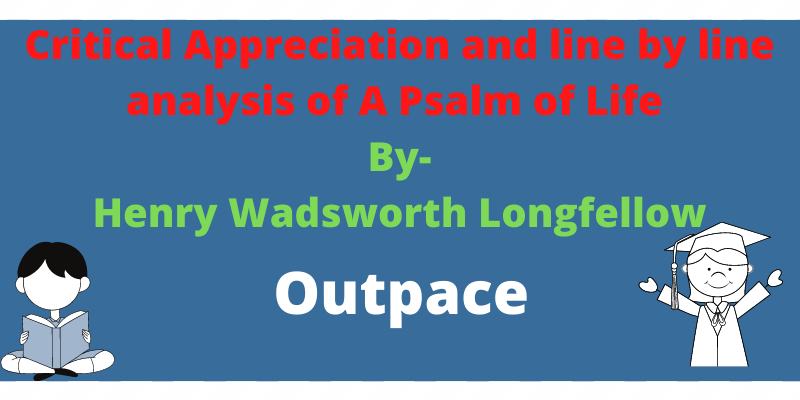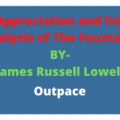About the Poet

Henry Wadsworth Longfellow (February 27, 1807 – March 24, 1882) was an American poet and educator. Longfellow was born on February 27, 1807, to Stephen Longfellow and Zilpah Longfellow in Portland, Maine, then a district of Massachusetts. He grew up in what is now known as the Wadsworth–Longfellow House. He studied at Bowdoin College and became a professor at Bowdoin and later at Harvard College after spending time in Europe.
He pursued his literary goals by submitting poetry and prose to various newspapers and magazines, partly due to encouragement from Professor Thomas Cogswell Upham.[18] He published nearly 40 minor poems between January 1824 and his graduation in 1825.[19] About 24 of them were published in the short-lived Boston periodical The United States Literary Gazette.
His works include “Paul Revere’s Ride”, The Song of Hiawatha, and Evangeline. He was also the first American to translate Dante Alighieri’s Divine Comedy and was one of the Fireside Poets from New England. His first major poetry collections were Voices of the Night (1839) and Ballads and Other Poems (1841).
Much of Longfellow’s work is categorized as lyric poetry, but he experimented with many forms, including hexameter and free verse. Longfellow often used didacticism in his poetry, though he focused on it less in his later years. Much of his poetry imparts cultural and moral values, particularly focused on life being more than material pursuits. Longfellow rarely wrote on current subjects and seemed detached from contemporary American concerns. He was also important as a translator; his translation of Dante became a required possession for those who wanted to be a part of high culture.
About the Poem
The poem says that the aim of our life should be to work for our future betterment. He says that life is a reality and should be taken quite seriously. Life is full of struggle and difficulties and is like a battlefield. We should face it bravely. To achieve our goals in life we should be patient and hard working.
Life is not an empty dream. It is a serious reality. Death is not the ultimate object for the soul is immortal. Sorrow or joy is not its preordained way or aim. Our main duty in life is to work hard and progress day by day. In this short and temporary camp of life, we should face the circumstances of life as a hero, and not be driven this way or that way by them like helpless cattle. We should give up idleness and start working hard to achieve success after success, we should learn to labor and wait for the result.
Structure of the Poem
The poem
Life is real! Life is honest! And the grave is not its goal. '' Dust thou art, to dust returnest, '' Is not spoken of the soul. Not enjoyment and not sorrow, Is our destined end or way ; But to act that each tomorrow Finds us farther than today, In the world,s broad field of battle, In the bivouac of life. Be not like dumb, driven cattle; Be a hero in the strife! Let us, then, be up and doing, With a heart for any fate ; Still achieving, still pursuing, Learn to labor and to wait.
The poem consists of 4 stanzas each with 4 lines. The rhyme scheme followed by the entire poem is ABAB. End Rhyme: End rhyme is used to make the stanza melodious. The rhyming words are “honest”, “returnest”, “goal” and “soul.”
Line By Line Analysis Of The Poem
line-1-4
Life is real! Life is honest! And the grave is not its goal. '' Dust thous art, to dust returnest, '' Is not spoken of the soul.
Life or living has got its own motive. We aren’t born to die, death is not the ultimate solution to life. We should know its reality and take life seriously.
The poet says that the body and soul are not the same, both are different. The body is made of dust and mixes in the dust after the death but the soul never dies. The soul is immortal.
line-5-8
Not enjoyment and not sorrow, Is our destined end or way ; But to act that each tomorrow Finds us farther than today,
The poet says that the purpose of life is to work hard and make our future brighter. He says or advises not to be dependent on the fate and work hard.
The poet says not to be so involved in enjoying the life but to focus on the betterment of tomorrow. To think to make our future brighter than today.
line-9-12
In the world,s broad field of battle, In the bivouac of life. Be not like dumb, driven cattle; Be a hero in the strife!
In this stanza, the poet compares life to the battlefield. He says to be a brave one and face all the struggles of life.
He says not to act like a dumb, driven cattle but to act like a hero and fight against all the obstacles.
line-13-16
Let us, then, be up and doing, With a heart for any fate ; Still achieving, still pursuing, Learn to labor and to wait.
The poet says that we should be busy working hard with courage and bravery and not think about the result beforehand. According to the poet, we should learn to labor and then wait for the result. If we work hard we will automatically get the success. Life is to do One’s Karma and take all eventualities in life as a result.
Literary Device
•Personification:-the attribution of a personal nature or human characteristics to something non-human, or the representation of an abstract quality in human form.
- -“Let the dead Past bury its dead!”
•Alliteration:-the occurrence of the same letter or sound at the beginning of adjacent or closely connected words.
- broad field of battle,
- dumb, driven cattle!”
•Metaphor:– a figure of speech in which a word or phrase is applied to an object or action to which it is not literally applicable.
- Life is spoken of as a battle that we must fight to survive.
•Allusions:- an expression designed to call something to mind without mentioning it explicitly
- “Dust thou art, to dust returnest”
•Climax:- the most intense, exciting, or important point of something; the culmination.
- Still …..Learn to labor and to wait.
Theme of the Poem
The main theme of the poem, as we can see, is to represent an optimistic view of life. According to the poet, this life is precious. We should not waste it. Rather, we should use this life to do something great, so that people remember us forever. We are here to win the battle of life, not to lose it. The poet is being optimistic. He encourages people to live their lives to the fullest, using the short time we have here on Earth as a gift. The poem is a message to future generations to find work and action that gives them purpose and passion. According to the poet, we should learn to labor and then wait for the result. If we work hard we will automatically get the success. Life is to do One’s Karma and take all eventualities in life as a result.




